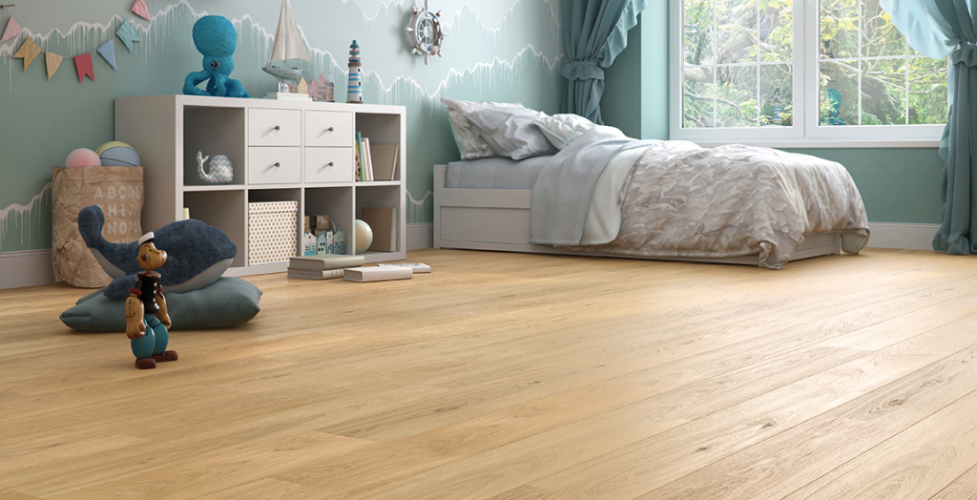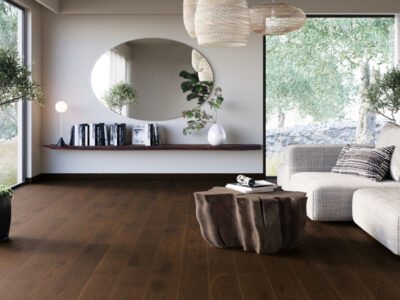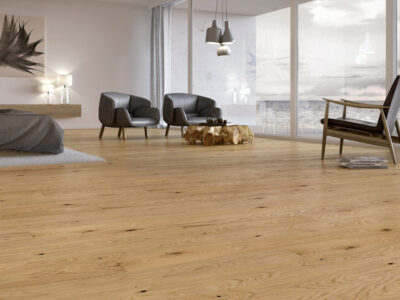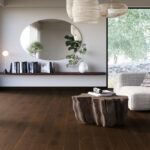What to consider when choosing a floor for a children’s room? We present 9 key criteria and look at how the most popular types of flooring materials – i.e. wood, carpet, ceramic and milled rock tiles, and vinyl panels – perform against them.
A floor for a toddler or an older child?
Should your child’s age matter when choosing a floor? It can be assumed that, at least for the first few years of life, the floor in a children’s room will be the centre of his or her daily activities, from learning to walk to playing to resting. We therefore recognise that the same criteria should be met by a floor for a toddler and an older child: from infancy to early school age.
What criteria should a floor for a children’s room meet?
What floor should I choose for my children’s room? Preferably one that meets as many of the following criteria as possible. And so the floor should be:
- Safe for health – made of materials that do not emit toxic substances (formaldehyde or phthalates), protected with health-neutral coatings, e.g. eco-friendly oils and varnishes.
- Natural – finishing houses and apartments with natural materials is part of the healthy construction trend. Natural materials are not only safe for health, but also promote the maintenance of the right micro-climate in the home.
- Durable – children are the best testers of flooring durability, so if you want your room finish to look aesthetically pleasing for years to come, go for high durability floors, preferably ones that can be renovated.
- Easy to clean and dirt-resistant – spilt juice, food leftovers, plasticine or paint smeared on the floor is a daily occurrence for many parents. It is no wonder that the ease of floor cleaning is sometimes the most important criterion when choosing flooring for a children’s room.
- Relatively soft – when we talk about flooring we are talking about the degree of hardness rather than softness, but it is worth finding the golden mean between making the floor resistant to deformation by heavy objects and not being a danger to a falling child.
- Characterised by a good grip – the more slippery the floor, the easier it is to clean, but also the more dangerous it is for toddlers, so look for finishing materials that offer a good grip.
- Warm – the floor will be the centre of children’s play for many years, so it should be warm to the touch. It is also worth considering installation of underfloor heating in the children’s room.
- Characterised by good soundproofing – the patter of tiny feet is a lovely sound, but banging various objects against the floor or dropping heavy toys on it is unlikely to evoke pleasant feelings in anyone. When choosing a floor for your children’s room, be sure to check its sound dampening properties.
- Aesthetic and cosy – aesthetic considerations should not be overlooked either when choosing a floor for a children’s room. It is worth going for classic, universal and tone-down colours and patterns.
Now that we have discussed the key criteria, we can move on to reviewing a variety of flooring types, and verifying to what extent the various finishing materials meet the indicated requirements.
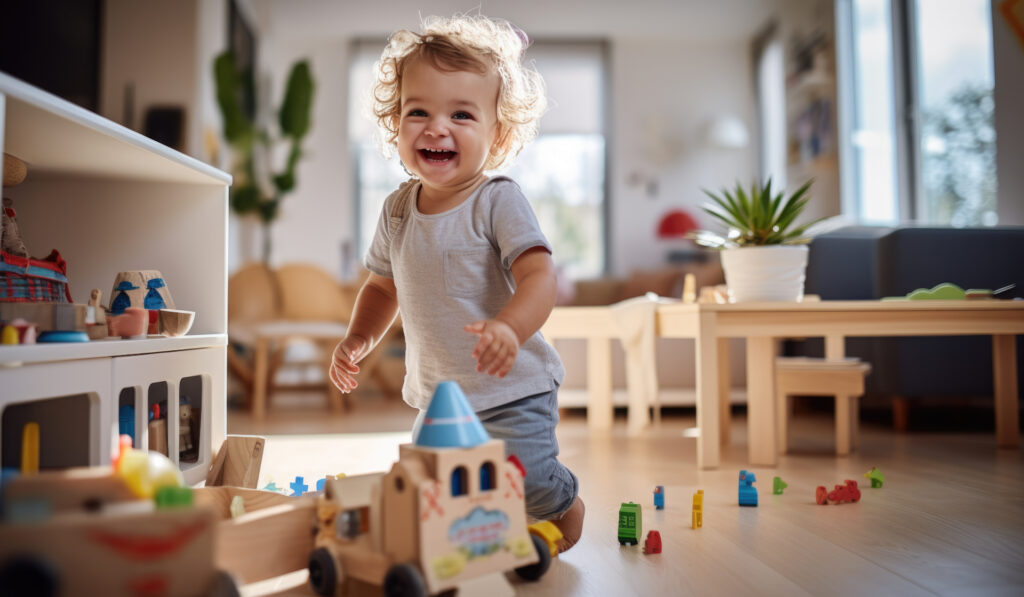
Best flooring for children: wood flooring
Wood flooring meets 9 of the 9 criteria we have identified. It is natural and safe for health, easy to clean, relatively soft, warm, is characterised by good soundproofing, durability and a good grip. It is a floor recommended for an allergy sufferer’s or an asthmatic’s room.
When choosing a wooden floor for your children’s room, pay particular attention to:
- what materials have been used to finish the floor: in the case of Baltic Wood floors, these are eco-friendly, hypoallergenic oils and varnishes;
- how durable a wooden floor is, and how many times its top layer can be renovated: Baltic Wood offers floors with varying thickness of the top layer: 2.7mm, 3.5mm and as much as 6.6mm – the latter ones can be renovated up to 9 times, and have been included in the NoLimits Collection,
- whether a particular floor model can be installed over underfloor heating: Baltic Wood three-layered wooden floors are made primarily of oak and ash, which are wood species that can be installed over underfloor heating.
Highly discriminating customers will find varnished, ultra-durable, natural-coloured wood floors the best choice for their children’s room. We strongly recommend the following models from the NoLimits Collection:
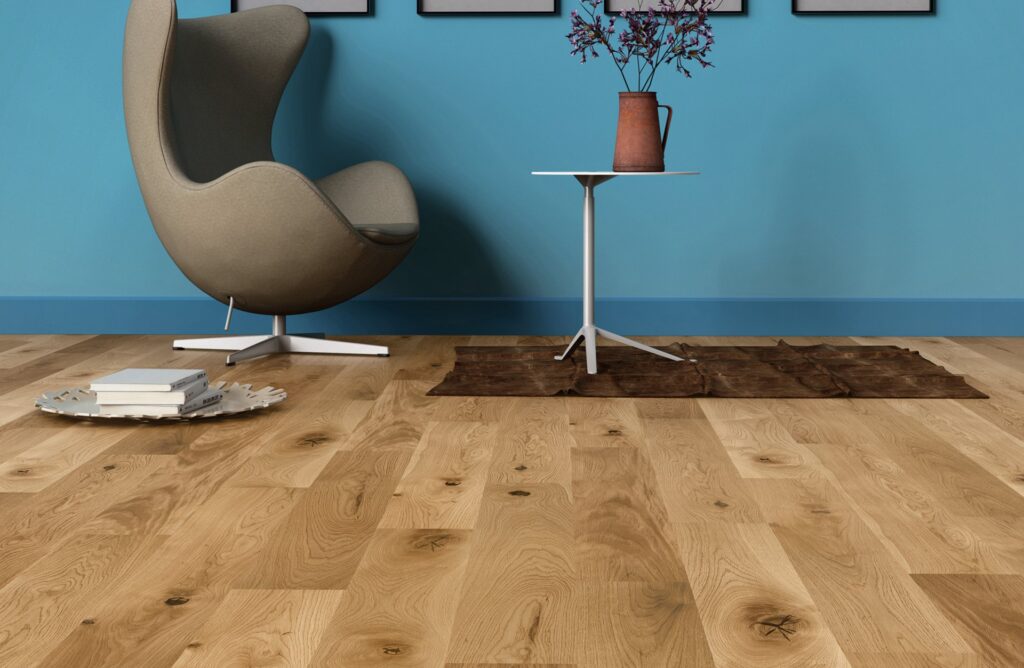
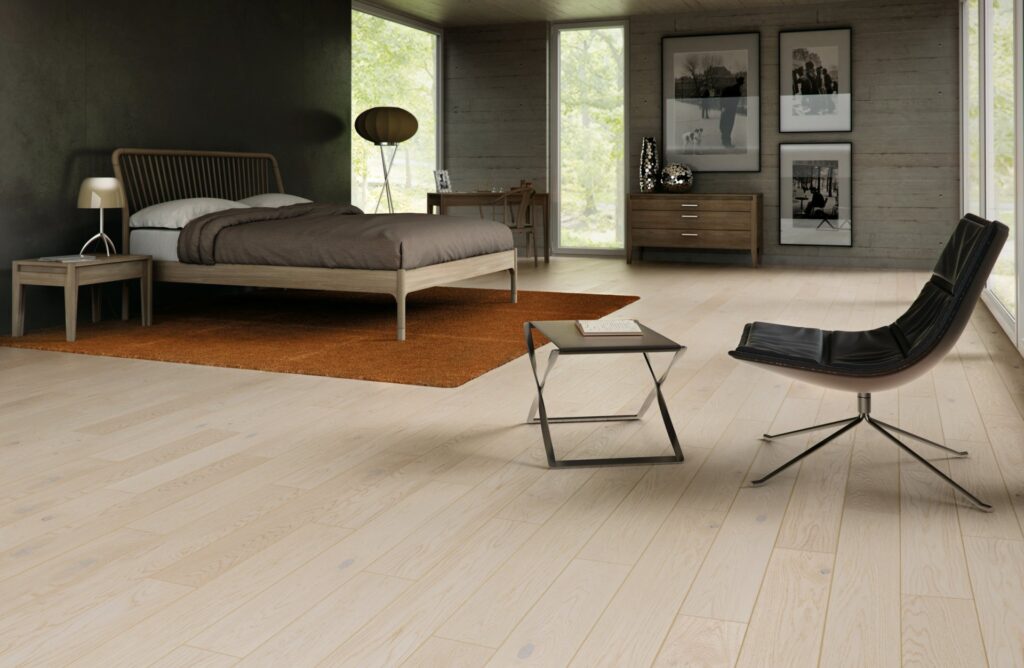
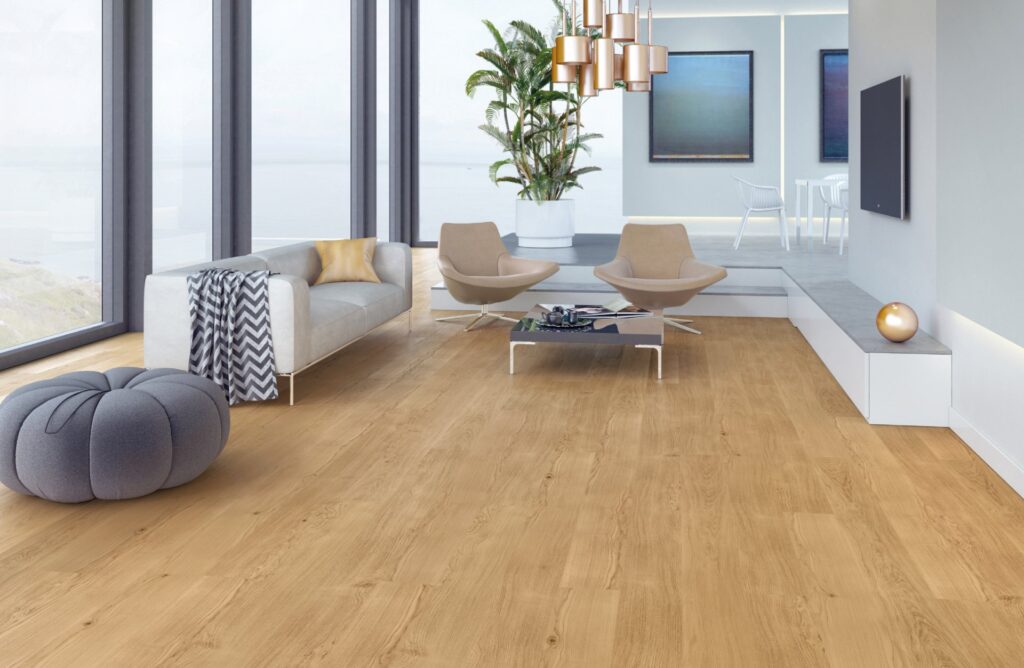
Particularly noteworthy are also the Smart Collection floors, which are available at very attractive prices, are easy to install and can be renovated two or three times (depending on the model).
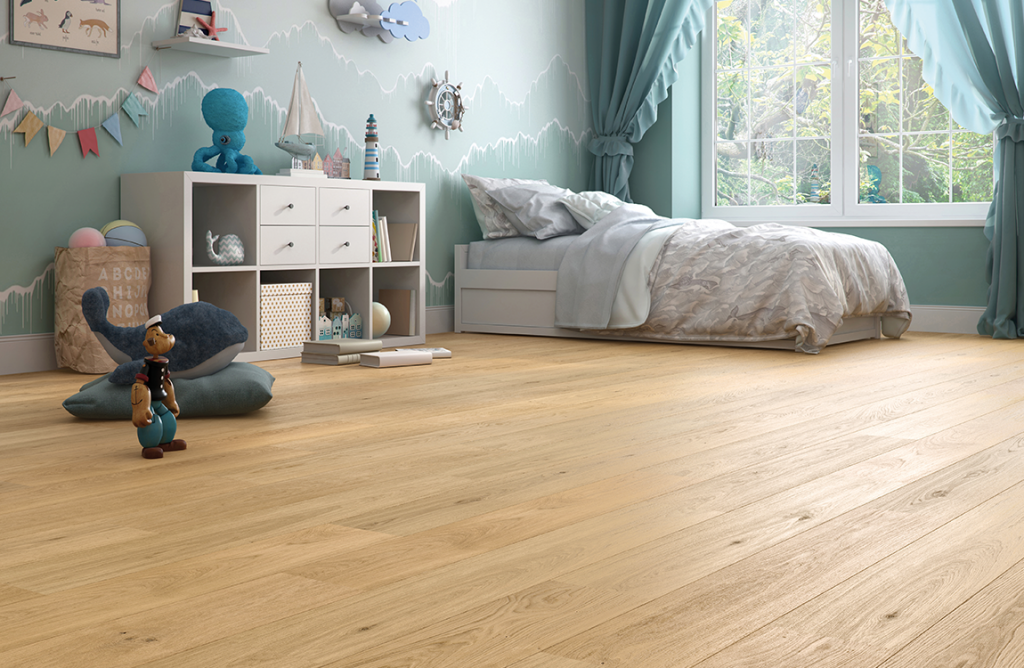
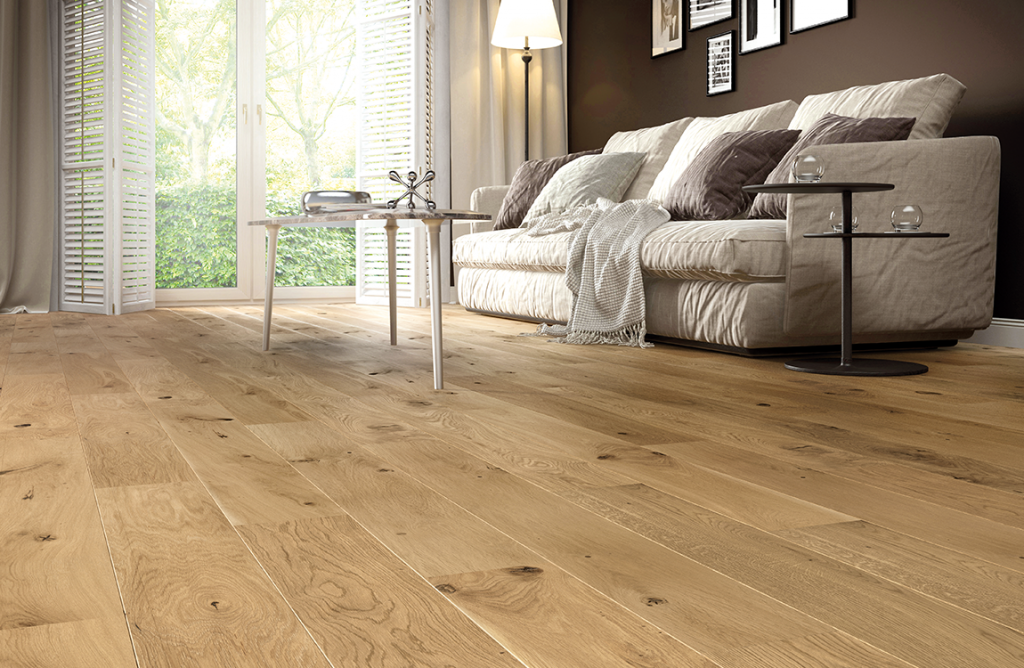
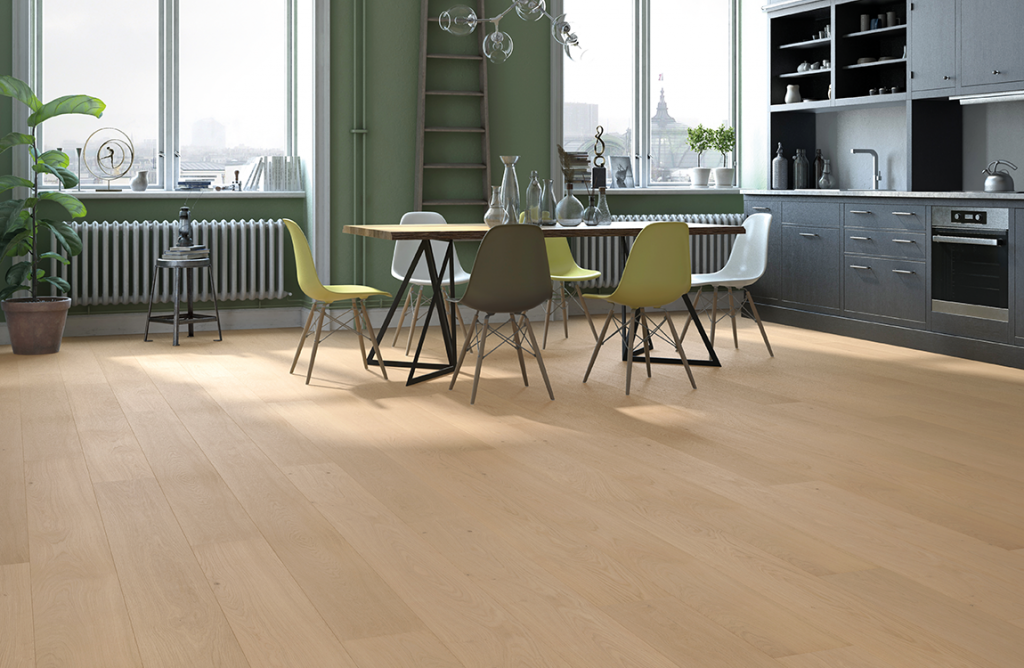
Besides wood, what other material can be used for flooring in a children’s room? An overview of other materials
How do other types of flooring perform in terms of the criteria? Let us take a look at the most commonly chosen materials.
Carpeting in the children’s room
Carpet meets quite a few requirements for flooring in a children’s room: it is soft, hardly slippery, warm and, with good insulation, it can adequately dampen noise.
However, its biggest disadvantage is that the carpeting material is very difficult to keep clean, and it is not resistant to dirt. Carrot or beetroot juice spilt on the carpet will require a lot of treatment to clean the stains. To get rid of plasticine entangled in the pile, you need to either freeze the carpet or treat it with warm air, and then remove the greasy stains.
Furthermore, it is not a natural material – carpets are primarily made from artificial polyamide. Every now and then we hear warnings about this material; we are warned against using products made of polyamide in contact with food, or against wearing clothes made of this material.
Ceramic and milled rock tiles
Ceramic and milled rock tiles are not the most popular choice for flooring in a children’s room, but some parents consider choosing them mainly for two reasons:
- these materials are very easy to keep clean, and are resistant to dirt,
- ceramic and milled rock floors are very durable (unless a heavy object falls on them).
It can therefore be assumed that they meet a maximum of 2 criteria out of 9, with the noteworthy fact that they are both very hard, quite slippery and cold. As a result, parents often end up – after installing ceramic or milled rock tiles in the children’s room – putting carpet or a rug over them. In other words: realising the shortcomings of the material they have chosen because of its ease of cleaning, then they cover it with the material most difficult to keep clean.
Vinyl flooring in the children’s room?
Finally, let us take a closer look at vinyl flooring, which is increasingly being advertised as the ideal solution for a children’s room. It fulfils many of the criteria we have cited: it is quite soft and warm to the touch, easy to keep clean and highly resistant to damage.
However, vinyl flooring is still controversial and there are no clear findings as to its impact on our health. There is a lot of variation in its composition, but most of it contains PVC, which is made from petroleum and table salt. What is more: some vinyl panels may contain phthalates, which are very hazardous to health, especially to the respiratory system. For this reason, we cannot recommend it for the children’s room.

